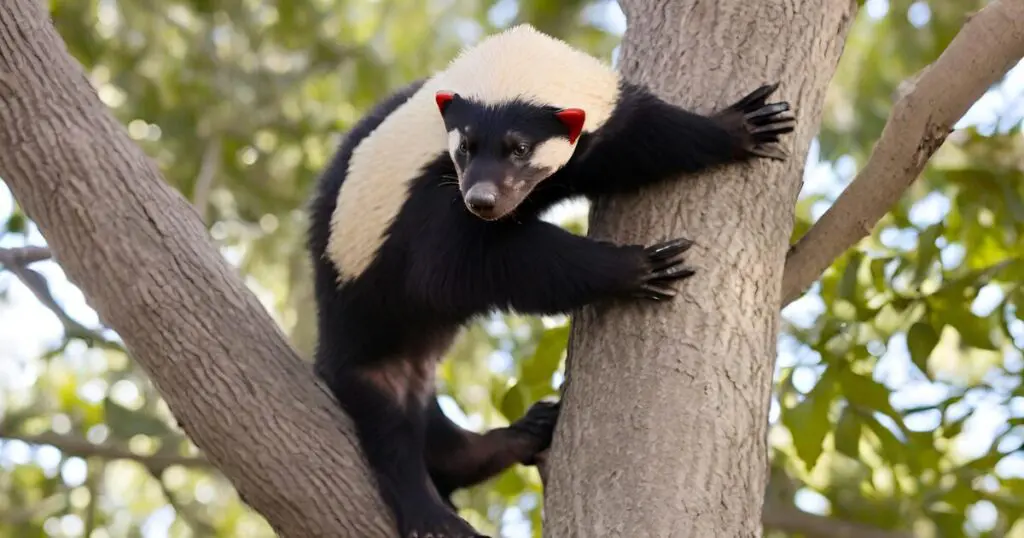Mother nature is full of different creatures, including Komodo dragons and honey badgers. Every animal has its uniqueness, yet they bear many similarities with each other. Think about the Komodo dragon vs Honey badger.
Komodo dragons, massive and venomous, overpower prey. Honey badgers, fearless and tough, fight anything. Both are scavengers, but the badger’s speed counters the dragon’s strength. But finally, Komodo dragons are more likely to be the winner in combat!
Thankfully, these animals live in two separate parts of the world. There are no real clashes between them. Still, let’s use our data, knowledge, and imagination for a fun discussion!
Komodo Dragon vs Honey Badger: Introduction
Before starting the fight, let me introduce you to our participants in the table below:
| Criteria | Komodo Dragon | Honey Badger |
| Class | Reptile (Lizard) | Mammal (Mustelid) |
| Scientific Name | Varanus komodoensis | Mellivora capensis |
| Average Height | Up to 6 ft (at the shoulder) | 2 ft (at the shoulder) |
| Average Weight | 300 lbs | 35 lbs |
| Origin | Indonesia | Sub-Saharan Africa, India, Middle East |
| Temperament | Solitary, ambush predator | Fiercely independent, aggressive |
| Appearance | Large, armored body, long forked tongue | Stocky build, loose skin, black and white markings |
| Hunting Weapon | Sharp claws, venomous bite | Powerful jaws and claws |
| Speed | Up to 13 mph | Up to 19 mph |
| Climbing | Good climbers as juveniles, less agile as adults | Excellent climbers |
| Swimming | Strong swimmers | Can swim well |
| Social Behavior | Solitary except during mating | Solitary except for mating and raising young |
| Lifespan | Up to 30 years | Up to 26 years |
| Bite Power | Strong crushing force | Powerful enough to crush bone |
| Intelligence | Considered intelligent for a reptile | Known for their problem-solving abilities |
Komodo Dragon vs Honey Badger: A Fight Simulation

You see, Komodo dragons only live in the Indonesian wild. Other than that, you may find them in zoos. On the other hand, honey badgers are not seen in Indonesia. Therefore, they do not engage in real fights. Nonetheless, let’s discuss their powers to reach a conclusion.
Round 1: Size
When it comes to size, Komodo dragons pick the win; I mean to receive the advantage. These lizards can be up to 10 feet, while most are about six feet. These lizards are bulky and weigh between 150 and 300 pounds. No wonder they are called the heavyweight champ in the lizard world. These lizards can give a good contest to bears as well when it comes to size.
Honey badgers, in contrast, are not that big. They reach up to 2 feet at max. And weight? Not more than 40 pounds!
So, Komodo Dragon 1: 0 Honey Badger
Round 2: Temperament
Both these animals are difficult to trust. Komodo dragons are carnivores and will attack anyone. Heck, Komodo dragons even eat humans. Similarly, honey badgers are very aggressive. I mean, really, very, very aggressive!
These stocky-built mammals named honey badgers fear none! Thankfully, they usually avoid getting into conflict with humans. Nonetheless, honey badgers are more aggressive as hunters than Komodos.
Therefore, it’s now Komodo Dragon 1:1 Honey Badger.
Round 3: Hunting Weapon
This is a difficult one now. Both Komodos and badgers have powerful weapons to hunt. They possess strong claws to slash and tear the skin and bones of their prey. However, Komodo dragons teeth are not as strong as Honey badgers, though they are quite sharp.
Still, Komodo dragons have another powerful tool. They are venomous! They can inject venom through their teeth, and the saliva contains harmful bacteria. The combination of these two makes it difficult for the prey to survive.
Komodo dragon venom does not let the blood clot. Therefore, many prey often die a few days later after being bitten by Komodo dragons. Komodos wait for their target to approach and make an ambush attack.
Komodo Dragon 2:1 Honey Badger
Round 4: Speed
The essence of fighting is the art of moving at the right time.- Bruce Lee.
Speed matters in combat. Sometimes, it matters more than size and weapon. Both are Komodos, and badgers have good speed. But honey badgers are the winner here. They can run at 19 mph, whereas dragons can burst at 13 mph for a few seconds.
Komodo dragons are ambush predators, so they do not have to rely on speed. But for a long fight, honey badgers can use their speed to even fend off leopards!
Komodo Dragon 2:2 Honey Badger
Round 5: Intelligence
This is a close call! Both Komodo dragons and honey badgers show signs of intelligence in their respective ways.
- Komodo Dragons: Considered intelligent for reptiles. They exhibit problem-solving skills, strategize hunts, and even recognize individual humans.
- Honey Badgers: Renowned for their tenacity and resourcefulness. They can solve puzzles to access food, use tools, and remember the locations of past food sources.
It’s difficult to say definitively which is “more” intelligent. To stay unbiased, let’s call it a draw.
Komodo Dragon 2:2 Honey Badger
Round 6: Special Abilities

Both honey badgers and Komodo dragons are good swimmers. They can navigate water bodies with ease. But when it comes to climbing, Komodo dragons get the “L.” They can only climb when they are young, while honey badgers are exceptional and agile climbers.
Komodo Dragon 2:3 Honey Badger
Round 7: Strength
In pure physical strength, the Komodo dragon reigns supreme. Their massive size translates to incredible muscle power.
- Komodo Dragon: They can overpower large prey with their strong limbs and deliver bone-crushing bites. Their tails are also weapons, packing a powerful whip-like strike.
- Honey Badger: While formidable, the honey badger’s strength comes from its tenacity and resilience. Their bite force is impressive but pales next to the Komodo dragon.
Komodo Dragon 3:3 Honey Badgers
Final Verdict
You see, on paper, it is a tie. Both have advantages over one another. Nonetheless, the advantages of Komodo dragons have been by large margins. Therefore, it is safe to say that these lizards would have been the winner in a real fight between Komodo dragons and honey badgers.
Komodo Dragon vs Honey Badger: Similarities
Enough of fighting. Let’s see what similarities these two hunters have. This is a more easy thing to find out.
- Both Komodo dragons and honey badgers are solitary creatures. They prefer to live and hunt alone except during mating season.
- Despite their different hunting styles, both are formidable predators.
- Both have thick, protective skin that offers some defense against bites.
- While they actively hunt, both Komodo dragons and honey badgers will also scavenge for carrion.
Komodo Dragon vs Honey Badger: Can They Be Friends

In the wild, a friendship between a Komodo dragon and a honey badger is highly unlikely. Here’s why:
- Both creatures are solitary by nature. None of them like to make friends. So, it is quite unlikely they will ever exchange gifts or share their prey.
- Komodo dragons see anything smaller as potential prey. The honey badger can be a good source of protein for that. These lizards may attack the mammals at the very first sight.
- Their habitats rarely overlap, but if they did, they would likely compete for food. So, any potential bond is highly unlikely.
Komodo Dragon and Honey Badger: Do They Make Good Pets?
Absolutely not! Neither Komodo dragons nor honey badgers are suitable pets. These are wild animals with powerful instincts and unpredictable behavior. Training or taming them is not possible.
Komodo dragons are massive and powerful, posing a serious threat to anyone attempting to care for them. Honey badgers, while smaller, are fiercely aggressive and have a reputation for fearlessness.
Additionally, their dietary and environmental needs are complex and difficult to replicate in a captive setting. Most importantly, in most places, it is not legal to keep them as pets.
Conclusion
From the above discussion, it is safe to say that Komodo dragons vs honey badgers would be a worth-watching fight. But thankfully, it does not happen for real. Komodo dragons are bigger and would probably win.
Both are predators and are unsocial. They cannot be friends and cannot be trusted. And about keeping them as pets, a no-no for both of them! They are better off in the wild.
